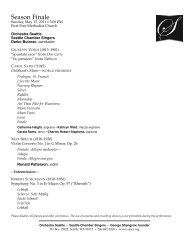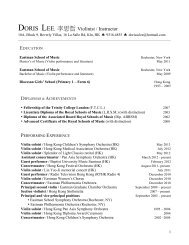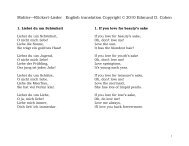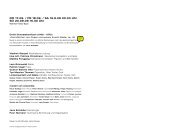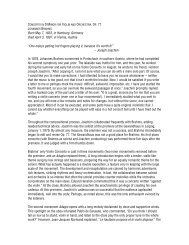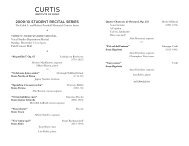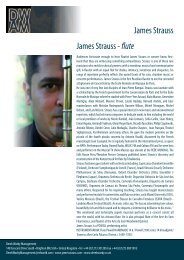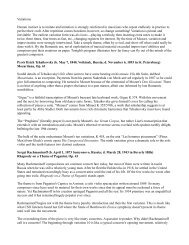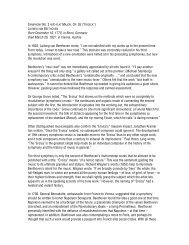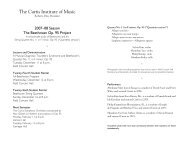Der fliegende Holländer - InstantEncore
Der fliegende Holländer - InstantEncore
Der fliegende Holländer - InstantEncore
You also want an ePaper? Increase the reach of your titles
YUMPU automatically turns print PDFs into web optimized ePapers that Google loves.
Wagner creates<br />
worlds, not just<br />
musical scores<br />
Dutchmans 13<br />
Actually, from Senta on, it seems to me that<br />
each of Wagner’s heroines moves towards<br />
the modern, and Wagner with them. Long<br />
before Ibsen’s Nora, Wagner is unable to<br />
sustain the pure romantic ideal. His women<br />
begin to live autonomous lives and demand<br />
their own stories. You can see this need to<br />
explore the female psyche in Senta, albeit<br />
in embryo. Devoted though she is to the<br />
idea of the Dutchman, she is also a woman<br />
whose physical reality is more alive than<br />
conceptual. She mocks her nurse, Mary;<br />
she flirts with Erik and is downright rude<br />
to him; she breaks any rule that doesn’t<br />
fulfil her need; and she is obsessed by<br />
the Dutchman’s picture, an early case<br />
study of a psychotic, perhaps.<br />
This view was breathtakingly realised in<br />
Harry Kupfer’s famous Bayreuth production.<br />
In fact, to explore this very real need for<br />
his women to develop, Wagner was forever<br />
inventing new musical atmospheres and<br />
investigating new corners of our reality (and<br />
its mythical abstraction). In allowing his<br />
women to grow, they become (unwittingly<br />
or not) increasingly modern. And for each<br />
new woman he created a new world.<br />
Brünnhilde and Isolde are far from saints,<br />
very much offspring of the fiery Nordic side<br />
of Senta’s temperament, and yet both attain<br />
a tragic transcendence that is far from a<br />
chauvinistic vision.<br />
This need for his heroines to develop<br />
complexity constantly leads Wagner’s<br />
invention of new musico-dramatic worlds;<br />
far more so than, say, his autobiographical<br />
Heldentenors. Wagner’s artistic instinct,<br />
symbolised by these female characters,<br />
led him towards a more Modernist (anti-<br />
Idealist) stance, reflected in his music.<br />
The development of Wagner’s art follows<br />
the development of his thought. This<br />
also answers my initial question: Wagner<br />
transforms the genre, the formal strictures<br />
of composition and his own career with<br />
The flying Dutchman because his ideas<br />
about opera, not just his talent, have been<br />
revolutionised. In fact, the ideas beckon<br />
the talent.<br />
LLO Dutchman_aw.indd 13 18/11/08 15:09:17




